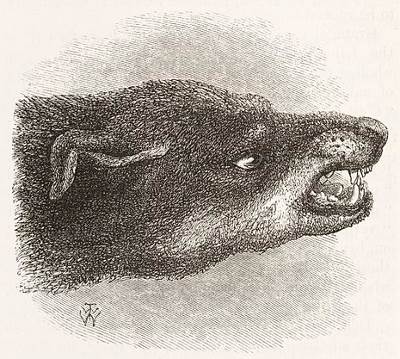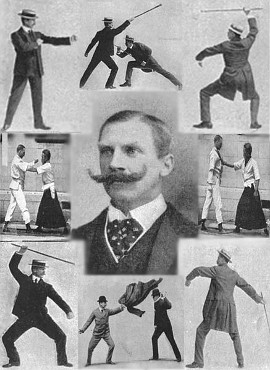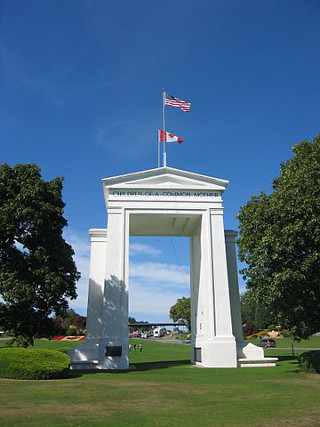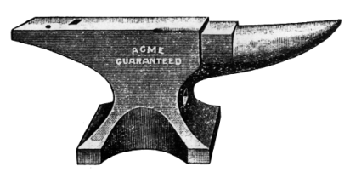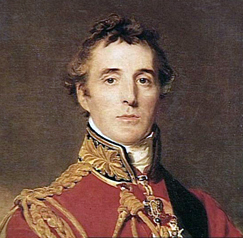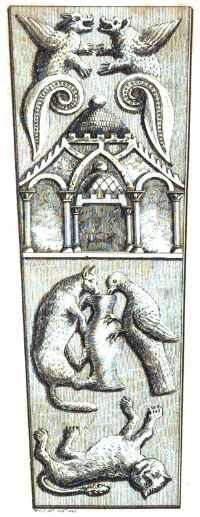
A letter from W.C. Trevelyan to John Adamson, secretary of the Antiquarian Society of Newcastle, Jan. 20, 1825:
In the autumn of 1823, I visited the interesting Church at Bridlington [Yorkshire] (founded about 1114, by Gilbert de Gant). On examining a tomb stone with an inscription and date of 1587, standing on two low pillars of masonry near the font, I found some appearances of sculpture on the under side of it, and having obtained leave to turn it over, the curious sculpture represented in the etching herewith sent, was discovered.
Its meaning, or date, I cannot attempt to explain. Can it have any reference to the building of the church? You will perceive both the circular and pointed arch (though the latter is probably only accidental, the space being limited).
The roof, I think, resembles some of the Roman buildings of the lower empire of which I have seen engravings.
The tiles, in shape, correspond exactly with those which were found among the remains of a Roman villa discovered a few years since at Stonesfield, near Oxford. The upper figures are very like some on Bridekirk Font (of the 10th century).
The figures of the Fox and Dove remind one of Æsop’s fable of the Fox and the Stork.
The society published the plate in its Archæologia Æliana. The best guess I can find is that it’s a 12th-century coffin lid that had been appropriated as a tombstone in 1587. But the meaning of the figures is unclear.

